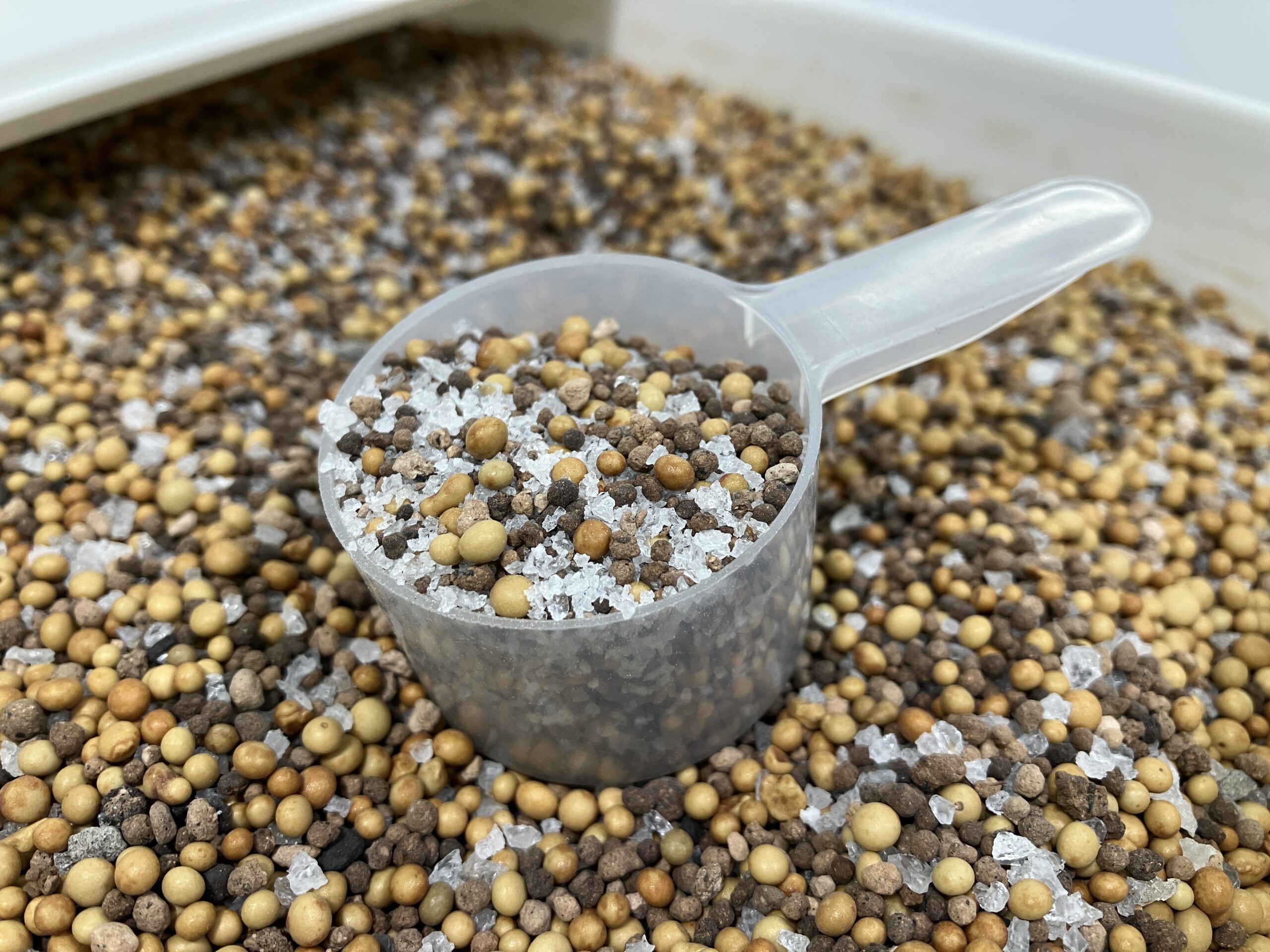Appendices B. Nutrient Solution Recipes

Appendices B. Nutrient Solution Recipes
Fertilizer Ingredients Breakdown
Macronutrients
- Nitrogen (N) Essential for leaf growth and chlorophyll production. Promotes vibrant green color and vegetative growth in plants. Helps plants create proteins and generate new tissues. Crucial for photosynthesis and overall plant development.
- Phosphate (P2O5) Supports root development, flower formation, and fruit production. Plays a critical role in energy transfer within plants, helps in seed germination, and strengthens plant cell walls. Enhances plant’s ability to convert sunlight into growth energy.
- Soluble Potash (K2O) Improves overall plant health, disease resistance, and stress tolerance. Regulates water balance, enhances fruit quality, and helps plants develop strong stems. Supports photosynthesis and improves the plant’s ability to withstand cold and drought conditions.
Secondary Nutrients
- Calcium (Ca) Critical for cell wall development and plant structure. Helps neutralize soil acidity, supports root growth, and improves nutrient uptake. Essential for preventing blossom end rot in tomatoes and other vegetables.
- Magnesium (Mg) Central component of chlorophyll, crucial for photosynthesis. Helps activate enzyme systems and supports nutrient absorption. Contributes to plant’s green color and overall energy production.
- Sulfur (S) Assists in chlorophyll formation and protein production. Helps create essential oils and flavors in plants. Supports nitrogen-fixing bacteria and improves overall plant metabolism.
Micronutrients
- Copper (Cu) Aids in photosynthesis and plant reproduction. Helps form chlorophyll and supports enzyme processes. Critical for proper plant metabolism and seed production.
- Iron (Fe) Essential for chlorophyll production and energy transfer. Crucial for plant respiration and metabolism. Prevents yellowing of leaves (chlorosis) and supports overall plant health.
- Manganese (Mn) Supports photosynthesis and nitrogen processing. Helps activate enzymes and supports plant growth. Important for pollen germination and seed production.
- Zinc (Zn) Supports growth hormone production and enzyme systems. Critical for stem growth and leaf development. Helps plants produce chlorophyll and carbohydrates.
Additional Components
- Sodium (Na) In limited quantities, supports plant metabolism. Can help with water regulation in some plant species, though excessive amounts can be harmful.
- Trace Minerals A blend of multiple minor elements that support overall plant health. These include boron, molybdenum, and other rare earth minerals that play subtle but important roles in plant nutrition.
- Azomite A unique mineral substance containing over 70 trace minerals. Derived from volcanic ash, it provides a wide spectrum of micronutrients that can improve soil health and plant growth.
Special Additive
Water Storing Polymer Crystals Hydrogel technology that absorbs and retains water, slowly releasing it to plant roots. Reduces watering frequency, prevents water stress, and improves moisture retention in soil. Particularly useful in drought-prone areas or for water-conscious gardening.
Bug Out or Bug In
The Bug Out Garden isn't just a product – it's your ticket to food independence in any situation. Whether you're bugging out or bugging in, this versatile system has you covered. In a "bug out" scenario, its portable design allows you to swiftly relocate your food source, ensuring sustenance even when on the move. For those "bugging in," it's an efficient solution for urban dwellers, preppers, or anyone wanting a reliable food supply at home. From apartment balconies to remote wilderness, The Bug Out Garden empowers you to grow fresh, nutritious food anywhere. It's not just about survival; it's about thriving with your own homegrown produce, come what may. With The Bug Out Garden, you're always ready to grow your own food security.

